People
‘I Was a No One’: How Kamel Mennour Went From an Algerian Art-World Outsider to a Star Paris Dealer
Mennour's gallery is now celebrating its 20th anniversary.
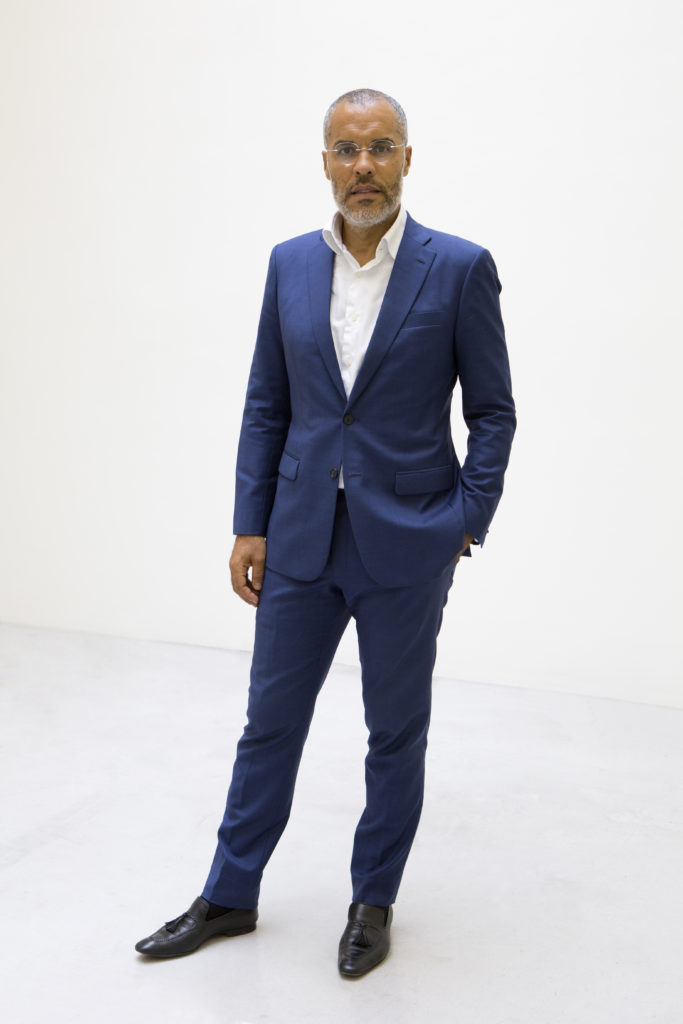
Mennour's gallery is now celebrating its 20th anniversary.

Naomi Rea

The sonorous boom of the former soccer star Eric Cantona’s voice fills a dark room in an upscale Paris art gallery, a stone’s throw away from the Notre Dame. The regional accent of the French actor and former Manchester United player, who was once a forward for France’s national team, might feel out of place, but Cantona is buddies with the gallery’s owner. The art dealer in question, Kamel Mennour, is a big soccer fan, and he called in the special favor to welcome a new artist to his roster.
“We’re extremely close,” Mennour said. “I called Eric and said that Neïl Beloufa wanted to use his voice for a project. He asked ‘what for?’ and I said, ‘I don’t know, but are you in or out?’ and he was in.” And so the soccer legend ended up lending his voice to a dreamlike, anti-capitalist fable created by Beloufa for his gallery debut.
I get the sense that the 53-year-old art dealer is a man who knows how to get things done. Over the past two decades, Mennour has become one of the most respected art dealers in Europe, with three space in Paris, another in London, and he is a regular at leading art fairs.
I’m speaking to Mennour in one of his three Paris spaces as the gallery celebrates its 20th anniversary with a group show. He is sleekly dressed, and so tall that he would be intimidating if he were not so completely affable. He gesticulates as he talks, and enthusiastically punctuates his stories by clapping his hands together and snapping his fingers.
Although he is now one of the most connected figures in Paris, working with some 40 in-demand artists, Mennour did not have an easy route into the art world. He comes from an ordinary Algerian family, and he got his start in art while studying for a degree in economics. To pay his way through university in Paris, he got a part-time job selling etchings door-to-door. “I was fed up with studying, but I was in love with art, and totally devoted to becoming a gallerist,” he says.
After he graduated, it took him the better part of a decade before he opened his first space, a small photography gallery on Rue Mazarine in 1999. He had a difficult time breaking into the closed art world in Paris, having had no mentors who could open doors for him. “I was a no one,” he recalls, “not even lucky enough to clean up, or to bring a coffee to the gallerists of the older generation.”
Two decades later, he represents artists such as Alicja Kwade, Daniel Buren, Anish Kapoor, and the estate of Alberto Giacometti. Jeff Koons is in his address book, too. Asked about the secret of his success, Mennour says, “It’s a miracle.” His advice to young gallerists is down to earth? “You need to believe in your dreams, work harder and harder every day, and not listen to the people who are telling you that you can’t do it,” he says.
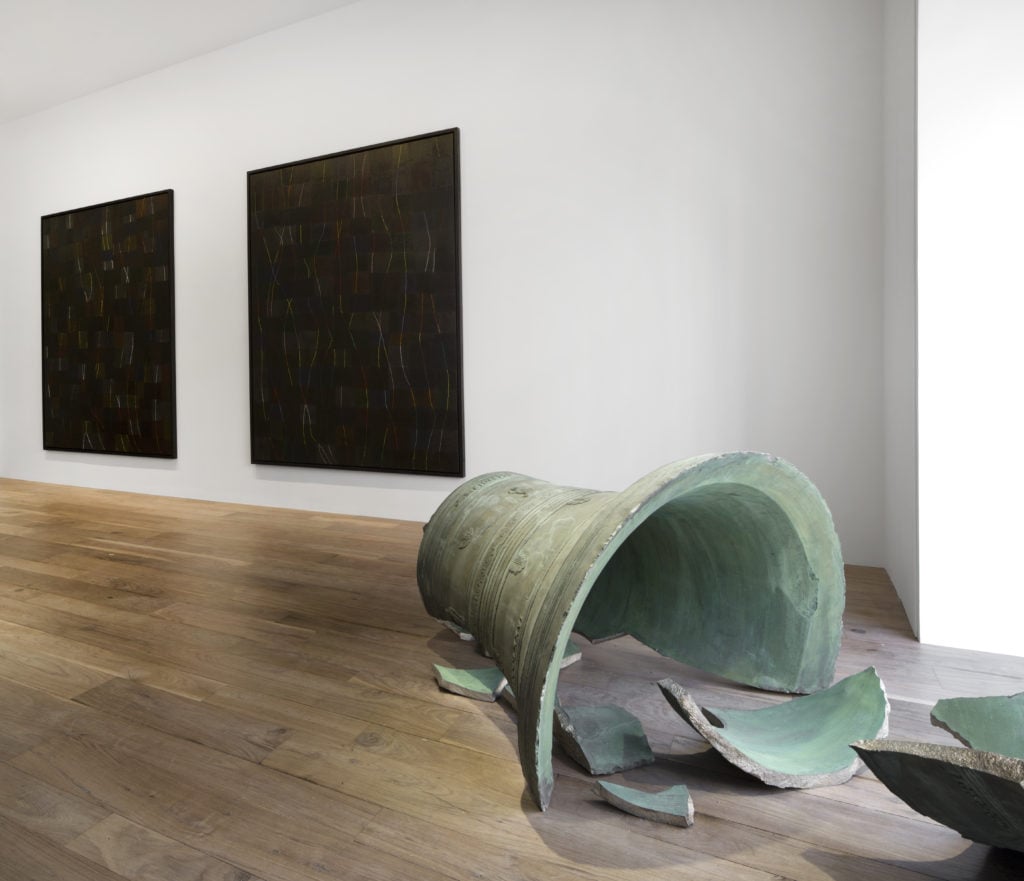
Installation view of “Spring and Fall: Latifa Echakhch” Photo: Julie Joubert.
To become a successful dealer you also need to be prepared to roll up your sleeves. Once, he tells me, when art handlers from a top company were stumped at how to move a pair of 1,500-pound bells by Latifa Echakhch into the gallery, a crew of workers from the hotel next door stepped in and lent a hand. “Being a gallerist is that,” he says. “You need to find solutions. When there’s a moment, you need to seize it. Because it’s a moment, and the artist is not waiting.”
While some art dealers might use their gallery’s birthday as an opportunity to boast about their highest-profile names Mennour chose to put some of the gallery’s younger stars in the spotlight. “This is really the DNA of the gallery, we take on the unknown, and we grow with our artists,” Mennour says.
Neïl Beloufa is a case-in-point. The 34-year-old joined the gallery last year after leaving a smaller Paris dealer, Balice Hertling, for the gallery with greater resources to carry out his increasingly ambitious projects. Speaking to artnet News, the French-Algerian artist explains that of all the big names who approached him, he went with Mennour because of his more humble background.
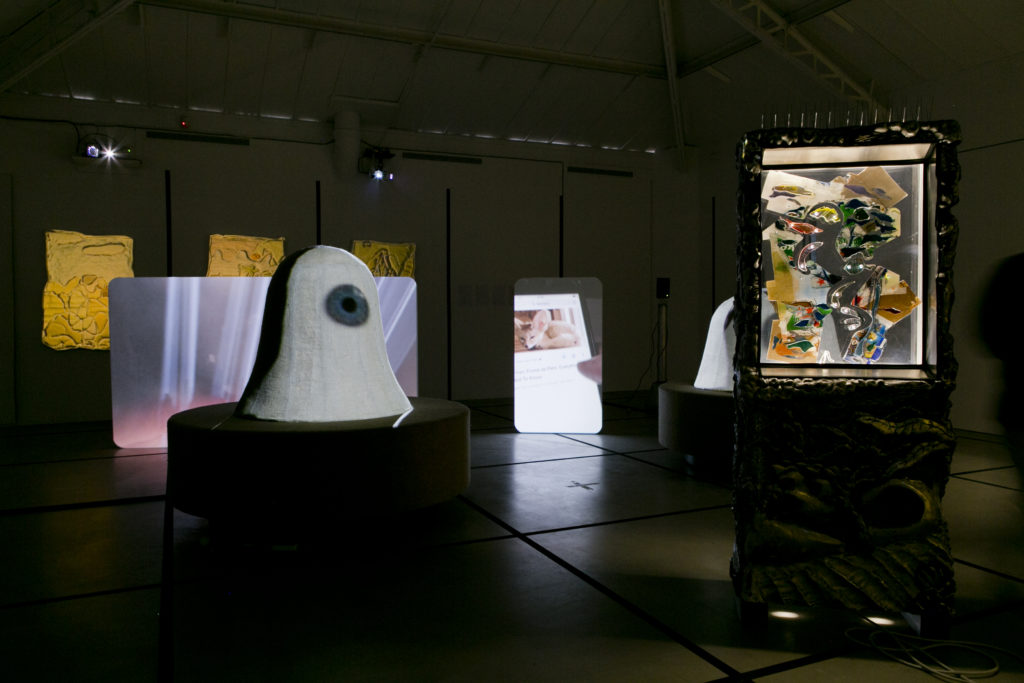
Installation view, “Neïl Beloufa: The Moral of the Story” (2019). © Photo: archives Kamel Mennour. Courtesy of the artist, and Kamel Mennour, Paris/London.
Beloufa joins Kwade, as well as Camille Henrot, Mohamed Bourouissa, and Petrit Halilaj. Work by Beloufa as well as another artist on the roster, Cameron Jamie, were included by Ralph Rugoff in his main exhibition at this year’s Venice Biennale.
The dealer explains that he also wanted to use his gallery’s birthday to champion the exciting emerging scene in the French capital. “I wanted to show what Paris is now, because Paris was nothing 20 years ago. Nothing. It was broken,” Mennour says. “When I started, I was flying to New York or Berlin or London, and when I told people that I came from Paris it was like if you would say today that you are coming from Oman. It was weird. Paris was something in the ‘40s and ‘50s, but the scene collapsed. 1964 was the end of the game, when Rauschenberg won.”
He’s talking about the year the then 39-year-old Robert Rauschenberg won the Golden Lion at the Venice Biennale, the first US artist to do so, after which the scene largely decamped to New York. “After that, Paris was restaurants, museums, fashion, but not art,” Mennour says.
Mennour is a passionate philanthropist. Since 2015, he has been organizing an annual charity auction to aid the Imagine Institute, a research hospital for children with genetic illnesses. The last edition raised €7.2 million (nearly $8 million), a figure which he hopes to increase at next year’s event.
The quiet philanthropy is a stark contrast to some of the more flashy charity work that has been going on in Paris lately. In the wake of the devastating blaze at Notre Dame, there were high-profile pledges by France’s biggest billionaires François Pinault and Bernard Arnault (and Larry Gagosian chipped in, too).
Mennour watched the “brutal” sight of the cathedral burning from his children’s schoolyard in the local neighborhood. For his part, he is in favor of rebuilding the monument with a new look. “We need to move with time,” he says. “I’m maybe too modern, but I say don’t re-copy it, maybe keep the same shape but a different material, like steel. Why use wood again?”
With the FIAC fair also around the corner, another topic on the minds of many in Paris is the planned unveiling of Jeff Koons’s controversial gift to the city in the wake of terror attacks.
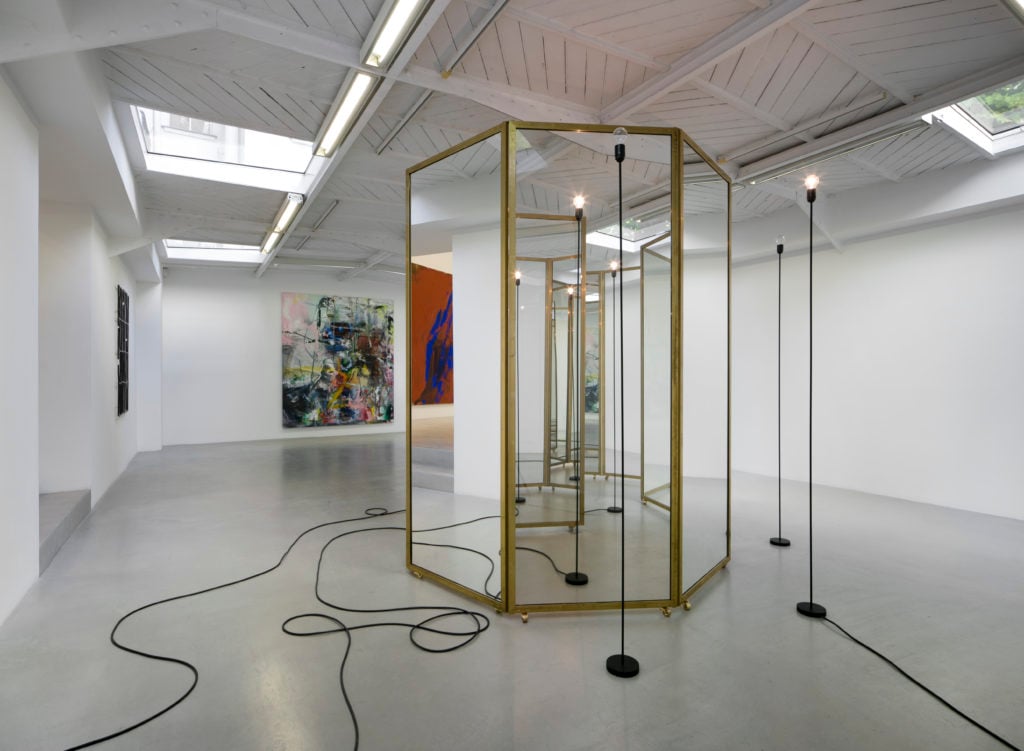
Installation view of “Indian Summer.” Photo: archives Kamel Mennour. Courtesy the artists and Kamel
Mennour, Paris/London.
“I think what was very hard for French people was that they were asked to pay for this gift, and secondly, that it was in front of the museum,” Mennour says, referring to the original site at the Palais de Tokyo. “Don’t forget that we were a big country of art, and it collapsed. Art went to New York in ‘65. So it might have felt a bit like the Americans were rubbing the more important artist in the faces of the French.”
Mennour was in the Stade de France with his youngest son when one of the attackers blew themselves up outside in November 2015. “I heard the boom and I didn’t imagine it was a bomb. It was horrible. A big nightmare for us,” he says. As for his own opinion on Koons’s Bouquet of Tulips, Mennour keeps diplomatically silent. “I won’t say anything because I know some of the gallerists. I know Jeff. They had a dream and wanted to bring it to life,” Mennour says. “There are people who like it, people who don’t, but with art it is always like that.” The artist’s controversial sculpture is due to be unveiled on October 4 outside of the Petit Palais in central Paris.
It was a long time before Mennour decided to open up a space outside of the French capital. Despite London and New York being the world’s biggest art market hubs, he felt that showing at art fairs and visiting biennials was enough to grow his international contacts. He finally decided to open a space in London just before the UK’s fateful EU referendum, which opened the Pandora’s box of Brexit.
In the end, London won out because of its proximity to Paris. Mennour is a family man, who has been married for 30 years. “I wanted to be really active and really tough and research players, but I also wanted to have a relationship with my 5-year-old son, my 17-year-old son, my three daughters,” Mennour explains. The convenience of the Eurostar train allows him the freedom to take his kids to school in the morning in Paris, make a quick trip to London, and be back in time to tuck them into bed at night.
Amid the turmoil caused by Brexit, some are banking on Paris making a comeback at London’s expense. David Zwirner is opening a space in the French capital and Gagosian expects his Paris spaces will be even busier. Asked whether he sees Brexit as an opportunity for Paris to seize, Mennour says, “you can’t build something based on the weakness of something else. You believe in your own ideas, and play to your strengths, and never mind what someone else is doing.”
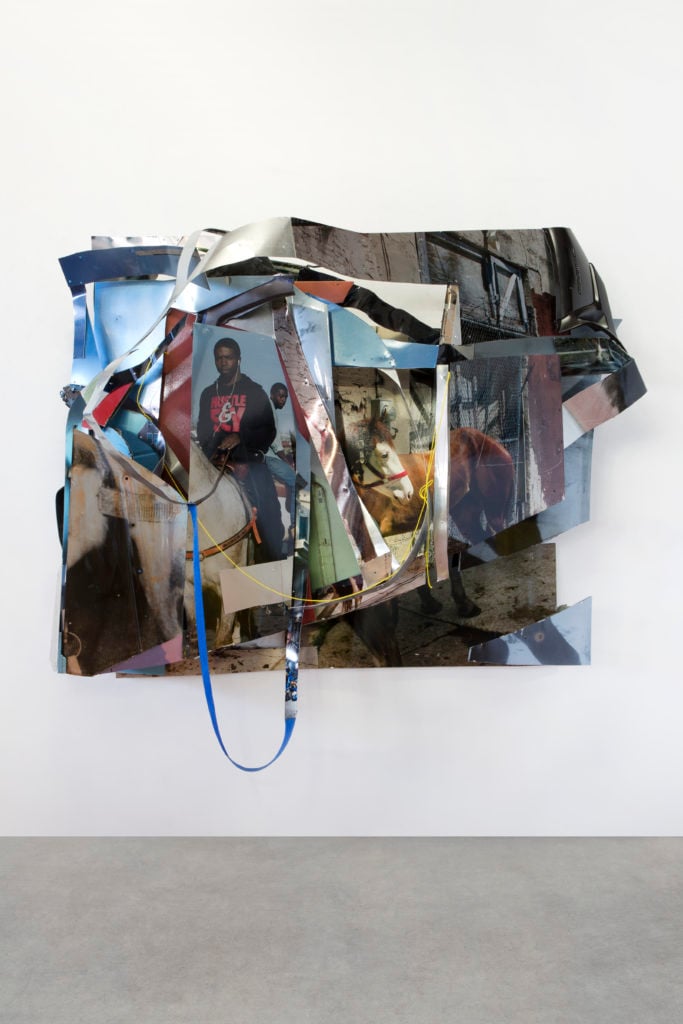
Mohamed Bourouissa,Yacin (2019). ©ADAGP Mohamed Bourouissa Photo: archives Kamel Mennour. Courtesy the artist, and Kamel Mennour, Paris/London.
Although he has given up his apartment in London’s Grosvenor Square, and has moved some art out of the city as a precaution, he is not pulling his investment in London. “I would be lying if I said that London is booming at the moment, I am very sad with this situation,” he says. “But we don’t know what is to come.”
In the meantime, he is already preparing for this year’s Frieze London and Frieze Masters. He says he prefers to make a statement with his fair presentations rather than “prostitute” himself for individual sales.
This year Mennour is bringing a solo presentation by Beloufa. At Frieze Masters, he will present a survey of the late French artist Gina Pane in collaboration with her estate, which will include some works not on sale that are on loan from museums.
It is a “calculated risk,” but he would rather his stands be memorable. And the risk has often paid off, as with the much-talked about bronze tree by Tatiana Trouvé that he showed at Frieze London last year. The 1.2-ton work (which was available at the fair for €650,000) now stands in the garden of a “very important” US collector, Mennour says, naming no names. One can only hope as much for the busy fair season ahead.